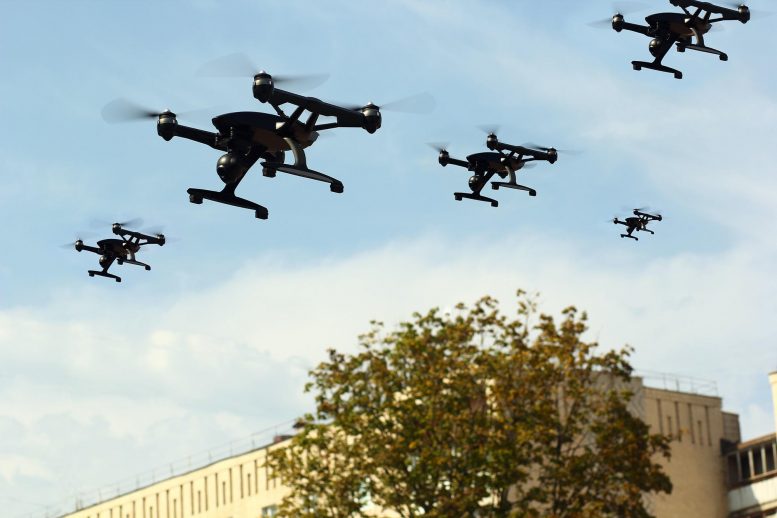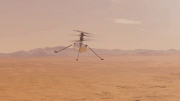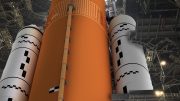
Unmanned aerial vehicles (UAVs) are getting smarter with the help of an international team of researchers. They developed a way for multiple UAVs to fall into formation while still automatically controlling their own flight needs, just like the drones used by the villain portrayed by Jake Gyllenhaal in the 2019 Spiderman movie.
They published their results in the IEEE/CAA Journal of Automatica Sinica, a joint publication of IEEE and the Chinese Association of Automation.
UAVs have long been studied for potential use in military or commercial applications because they are so energy efficient while still carrying relatively large payloads.
“The holy grail of such research is to have formations of UAVs that are able to complete missions autonomously with little supervision for the human operator,” said Simone Baldi, paper author, and professor at the School of Mathematics at Southeast University. Baldi is also an assistant professor with the Delft Center for Systems and Control.
In this paper, Baldi and his team use a technique called “software-in-the-loop.” This allows for direct testing of the UAV with the autopilot software already onboard the UAV. Through this direct testing, the researchers will be able to move quicker from the testing stage to real flights.
The researchers set up realistic simulation environments for UAVs equipped with adaptive controllers to simulate flight under varying environmental conditions. The adaptive controllers can help the UAVs learn their environment, as well as adapt when conditions change.
“UAVs equipped with adaptive controllers are expected to optimize their flight operation and adapt to environmental changes, such as different loads, faults, or wind currents,” Baldi said.
Next, the researchers plan to conduct real flights for teams of UAVs. According to Baldi, very few companies and institutes across the world are capable of conducting reliable flights with formations of UAVs.
“We built a simulation environment that is able to learn and adapt to the characteristics of each UAV,” Baldi said. “The aim is to test not only a single UAV but teams of UAVs, each with different features.”
###
Reference: “A Software-in-the-Loop Implementation of Adaptive Formation Control for Fixed-Wing UAVs” by Jun Yang, Ximan Wang, Simone Baldi, Satish Singh and Stefano Farì, September 2019, IEEE/CAA Journal of Automatica Sinica.
DOI: 10.1109/JAS.2019.1911702
Other contributors include Jun Yang of the Systems Engineering Research Institute at the China State Ship-building Corporation; Ximan Wang and Satish Singh, both of the Delft Center for Systems and Control; and Stefano Fari of the German Aerospace Center, at the Institute of Space Systems. Fari also has affiliations with the Delft Center for Systems and Control and the Politecnico di Milano.
This work was supported by the Fundamental Research Funds for the Central Universities, the Special Guiding Funds for Double First-Class and the Delft Center for Systems and Control.








Be the first to comment on "Smarter UAVs Fall Into Formation"